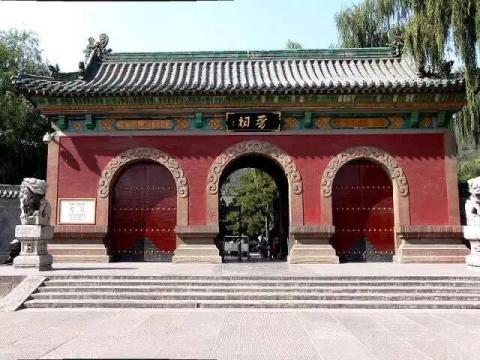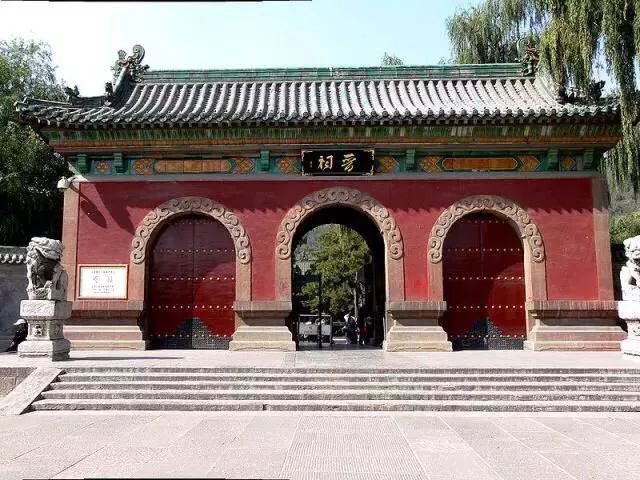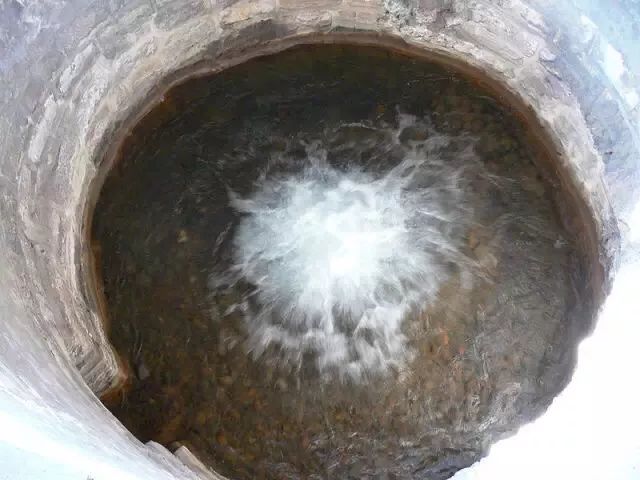

Jin Temple, formerly known as King Jin Temple, was originally named Tang Shuyu Temple. It was built to commemorate Tang Shuyu, the founding prince of the Jin Kingdom (who was later posthumously named King of Jin). It is the earliest existing royal garden in China and is the ancestral hall of the Jin Dynasty.
The main hall of Jinci Temple we see now is the Notre Dame Hall. As an ancestral hall, why isn’t the main hall dedicated to Tang Shuyu? It turns out to be related to the history of the Northern Song Dynasty. In 959, Zhao Kuangyin passed the "Chenqiao Mutiny" and became the emperor of the Song Dynasty. Zhao Kuangyin told himself that the Song Dynasty could never become the sixth short-lived dynasty after the Five Dynasties, so he had to resolve the separatist situation of the Five Dynasties and Ten Kingdoms. He wants to get rid of those regimes that seek hegemony one by one.
On February 15, 979 AD, the Song army set out from Kaifeng to capture Taiyuan City in one fell swoop, destroy the Northern Han Dynasty, and unify the Central Plains. However, the soldiers and civilians of the Northern Han Dynasty were brave and fearless and fought to the death. The siege was extremely brutal, with piles of corpses under the city, and "the arrows on the city were like hedgehog hair" ("Xu Zi Zhi Tong Jian·Song Ji X"). In the end, the Song army still occupied Taiyuan City.
The Emperor of the Northern Song Dynasty stood at the top of the city and re-examined this thousand-year-old city. Revenge was the only thing he wanted to do now. Burn Taiyuan! The emperor issued an order that has been reviled for thousands of years.
"All the torches are fired, and the palaces, temples and houses are all destroyed in one day." The 1,500-year-old magnificent Taiyuan City, with three inner and outer cities, was in ruins.
Taiyuan City must be destroyed. This has been the strong wish of Zhao Kuangyin and Zhao Guangyi. Because this is the land of Longxing that achieves hegemony. Emperor Long Qian of the Han Dynasty entered the Han Palace in Taiyuan, Li Yuan and his son launched an army in Taiyuan and established Chang'an as the capital, Gao Huan and his son settled in Taiyuan and founded the Northern Qi Dynasty. Emperor Yang Guang of the Sui Dynasty and Li Zhi, Emperor Gaozong of the Tang Dynasty, were appointed as Jin kings with Taiyuan as their fiefdom before they came to the throne. Li Cunxu, Shi Jingtang, and Liu Zhiyuan who rose up in Taiyuan and the three dynasties they founded, namely the Later Tang, the Later Jin, and the Later Han, as well as the later Liu Chong and the Northern Han regime, won Taiyuan the reputation of "Dragon City". "Zhou Shen. The king's energy lingers in the northwest, and the true tiger looks away." This ancient poem describing Taiyuan is called "Dragon City".
As the True Dragon Emperor, what they fear most is of course the appearance of the same kind elsewhere. For the sake of their "descendants and emperors for eternity", he must destroy this "dragon vein".
Taiyuan’s nightmare is not over yet. According to ancient Feng Shui theory: the symbol of mountains is a dragon, called dragon veins, and according to the trend of the mountain, it is divided into dragon head, branch dragon, rising dragon and dragon tail. Therefore, Xizhoushan in the north of Taiyuan is the head of Taiyuan's dragon vein, Longshan and Tianlongshan in the southwest are the dragon's tail, and Taiyuan is the belly of the dragon. Therefore, the innocent Xizhoushan was cut off the top of the mountain by the Song army, which is called the dragon horn.
When Taiyuan City was rebuilt, an order was issued: streets could only be built with D-shaped streets, not cross streets. Ding and nail are homophones, in order to "nail" the dragon vein of Taiyuan.
However, this is not over yet. In Zhao Guangyi's view, any future troubles that may endanger his rule must be eliminated. He also wanted to eliminate one of the most critical figures, who was Tang Shuyu, the founding monarch of the Tang Dynasty in the Western Zhou Dynasty who protected eight emperors from ascending to the throne of Dragon Court. Therefore, although Zhao Guangyi destroyed Taiyuan City, he ordered the reconstruction of a temple, the Jinci Temple. The purpose of the reconstruction was to drive Tang Shuyu out of the Jinci Temple. How to get him out? Zhao Guangyi adopted a method of "exchanging a phoenix for a dragon", substituting a beam for a pillar. They sent people to demolish the main temple of "Tang Shu Yu Temple" which was located at the top of the central axis of Jin Temple and backed by Xuanweng Mountain. A building named "Girls' Temple" was built in its place to replace the Tang Shu Yu Temple.
This girl is the mother of Tang Shuyu and the daughter of Jiang Taigong: Yi Jiang.

Zhao Guangyi's intention is very obvious, which is to fundamentally change and eradicate the theme of the gods of Tang Shu and Yu and the worship of Jin Temple, so as to eliminate the psychological basis of Taiyuan endangering his rule. In addition to Yi Jiang, there were forty-two statues of maids in the Girl's Temple, which turned the entire temple into a world of women and completely drove Tang Shuyu out of the Jin Temple.

Several hundred years later, in the Yuan Dynasty after the fall of the Zhao and Song dynasties, people built the Tang Shu Yu Temple in an inconspicuous place in the Jin Temple, and the "Girls Temple" was changed to the "Mother's Temple". This is why Taiyuan City was destroyed but Jinci Temple was well preserved.
The architecture of Jinci has unique value in the history of Chinese architecture. There was a very powerful book in the Song Dynasty called "Building Methods" written by Li Jie. This book taught China how to build houses for nearly a thousand years. Before the book "Building French Style" was written, Jinci Notre Dame Temple was the case referenced in this book.
 Our Lady's Basilica
Our Lady's Basilica
The Jinci Temple covers an area of ten hectares and contains various ancient buildings such as ancestral halls, palaces, temples, and Taoist temples, dating from the Song, Jin, Yuan, Ming, and Qing dynasties. Everything is complete and it can be called a museum of ancient architecture.

 Zhou Bai
Zhou Bai
Jinci has ancient landscape structural features, a northern classical garden scenery, but also has the charm of Jiangnan gardens. It has been praised as "the first scenic spot in the Three Jins" in the past dynasties.
 Uonuma Feiliang
Uonuma Feiliang

 Fountain of Old Age
Fountain of Old Age


The overall layout is characterized by the central axis building. Across the archway and the three bridges, enter the main entrance, pass through Shuijing Terrace, Huixian Bridge, Jinren Terrace, Duiyue Square, Bell and Drum Tower, Xian Hall, Yunuma Feiliang to the Notre Dame Hall. The main buildings of Jinci are arranged on an axis.
Jinci Temple is worth a visit.
